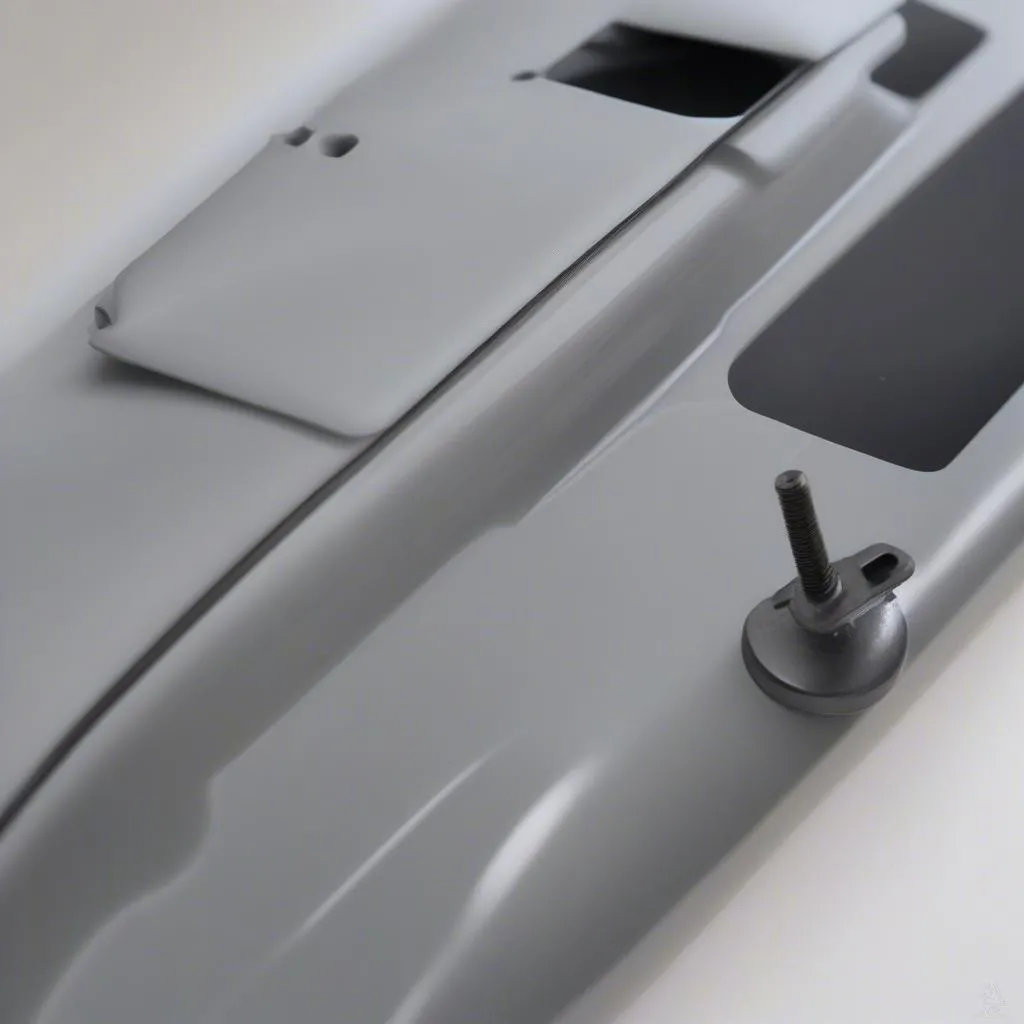A P0173 code popping up on your 2000 Mercedes E320’s dashboard can be a real headache. This code indicates a “Fuel System Too Lean Bank 1” issue, meaning the engine is running on a lean air-fuel mixture. But don’t worry, this is a relatively common problem, and with a little troubleshooting, you can have your E320 purring like a kitten again.
What Causes a P0173 Code on a 2000 Mercedes E320?
Several culprits could be triggering that pesky P0173 code. Let’s dive into the most common reasons:
- Vacuum Leaks: Imagine your engine as a set of lungs, and any leak in the intake system is like a hole in those lungs. This disrupts the precise air-fuel mixture the engine needs, leading to a lean condition.
- Faulty Mass Air Flow (MAF) Sensor: The MAF sensor acts like your car’s baker, measuring the airflow into the engine so it can add the right amount of fuel. A malfunctioning MAF sensor can throw off this delicate balance.
- Oxygen (O2) Sensor Issues: Think of the O2 sensors as taste testers, monitoring the exhaust gases to ensure the correct air-fuel ratio. A faulty O2 sensor can misinform the engine, causing it to run lean.
- Fuel System Problems: From a clogged fuel filter to a weak fuel pump, issues in the fuel delivery system can starve the engine of the fuel it needs, triggering the P0173 code.
p0173-code-dashboard|car-dashboard-p0173-code|A close-up photo of a car dashboard with the check engine light illuminated and a digital display showing the code P0173.
Recognizing a P0173 Code
Apart from the check engine light illuminating on your dashboard, here are some telltale signs of a P0173 code:
- Rough Engine Idle: Your E320 might sound like it’s about to stall, especially when idling.
- Hesitation or Stumbling During Acceleration: Pressing the gas pedal might result in a delayed response or jerky acceleration.
- Decreased Fuel Efficiency: A lean air-fuel mixture can lead to a noticeable drop in your Mercedes’s gas mileage.
Gathering Your Tools for the Fix
Before you roll up your sleeves, make sure you have these essential tools handy:
- OBD-II Scanner: This handy device allows you to read and clear trouble codes, giving you valuable insights into your car’s health.
- Socket Set and Wrenches: These will be your trusty companions for tightening and loosening various components.
- Screwdrivers: A set of both flat-head and Phillips screwdrivers will come in handy for dealing with clamps and sensor connections.
- Carburetor Cleaner: This magical spray helps clean the MAF sensor and throttle body, crucial components in the air-intake system.
car-repair-tools|mechanic-tools-obd2-scanner| A flat lay photo of essential car repair tools on a workbench, including an OBD-II scanner, socket set, wrenches, screwdrivers, and a can of carburetor cleaner.
Fixing the P0173 Code: A Step-by-Step Guide
Remember to consult your E320’s service manual for specific instructions and torque specifications before attempting any repairs.
- Inspect for Vacuum Leaks: Start by visually inspecting the intake manifold, vacuum hoses, and gaskets for any cracks, loose connections, or damage. A hissing sound while the engine is running can also indicate a vacuum leak.
- Check and Clean the MAF Sensor: Carefully remove the MAF sensor and inspect it for dirt or debris. Use carburetor cleaner to gently clean the sensor’s delicate wires.
- Inspect the Oxygen Sensors: With the engine cold, locate the upstream and downstream oxygen sensors. Check their wiring for any damage and inspect the sensors themselves for signs of wear or contamination.
- Examine the Fuel System: Check the fuel filter for clogging and replace it if necessary. Listen for the fuel pump’s priming sound when you turn the ignition key to the “on” position. A weak or absent sound could indicate a failing fuel pump.
“When dealing with complex engine codes like P0173, using a reliable OBD-II scanner is paramount,” advises automotive expert Michael Carter, author of “Modern Automotive Diagnostics.” “These scanners provide not only code definitions but also live data streams, allowing you to monitor sensor readings in real time and pinpoint the root cause of the problem efficiently.”
mechanic-using-obd2-scanner|car-diagnostics-obd2-scanner| A mechanic wearing a blue uniform is using an OBD-II scanner plugged into a car’s diagnostic port, checking for error codes and analyzing engine performance data.
Frequently Asked Questions about P0173 Code
Q: Can I drive my car with a P0173 code?
A: While you might be able to drive for a short distance, it’s not recommended. Driving with a lean air-fuel mixture can lead to engine damage over time.
Q: What is the difference between a P0171 and P0173 code?
A: Both codes indicate a lean condition, but P0171 refers to Bank 1, while P0173 refers to Bank 2. In a V6 or V8 engine, the banks refer to the separate groups of cylinders.
Q: Can a faulty gas cap cause a P0173 code?
A: While less likely, a loose or damaged gas cap can sometimes cause a small vacuum leak, potentially triggering a lean code.
Q: Can Cardiagtech products help me diagnose and fix a P0173 code?
A: Yes, CARDIAGTECH offers a range of diagnostic tools that can assist you in identifying and resolving car issues, including the P0173 code.
Conclusion
Fixing a P0173 code on your 2000 Mercedes E320 might seem daunting, but by following these steps and using the right tools, you can tackle this common problem. If you’re ever unsure about any repair, don’t hesitate to seek professional help from a qualified mechanic.

